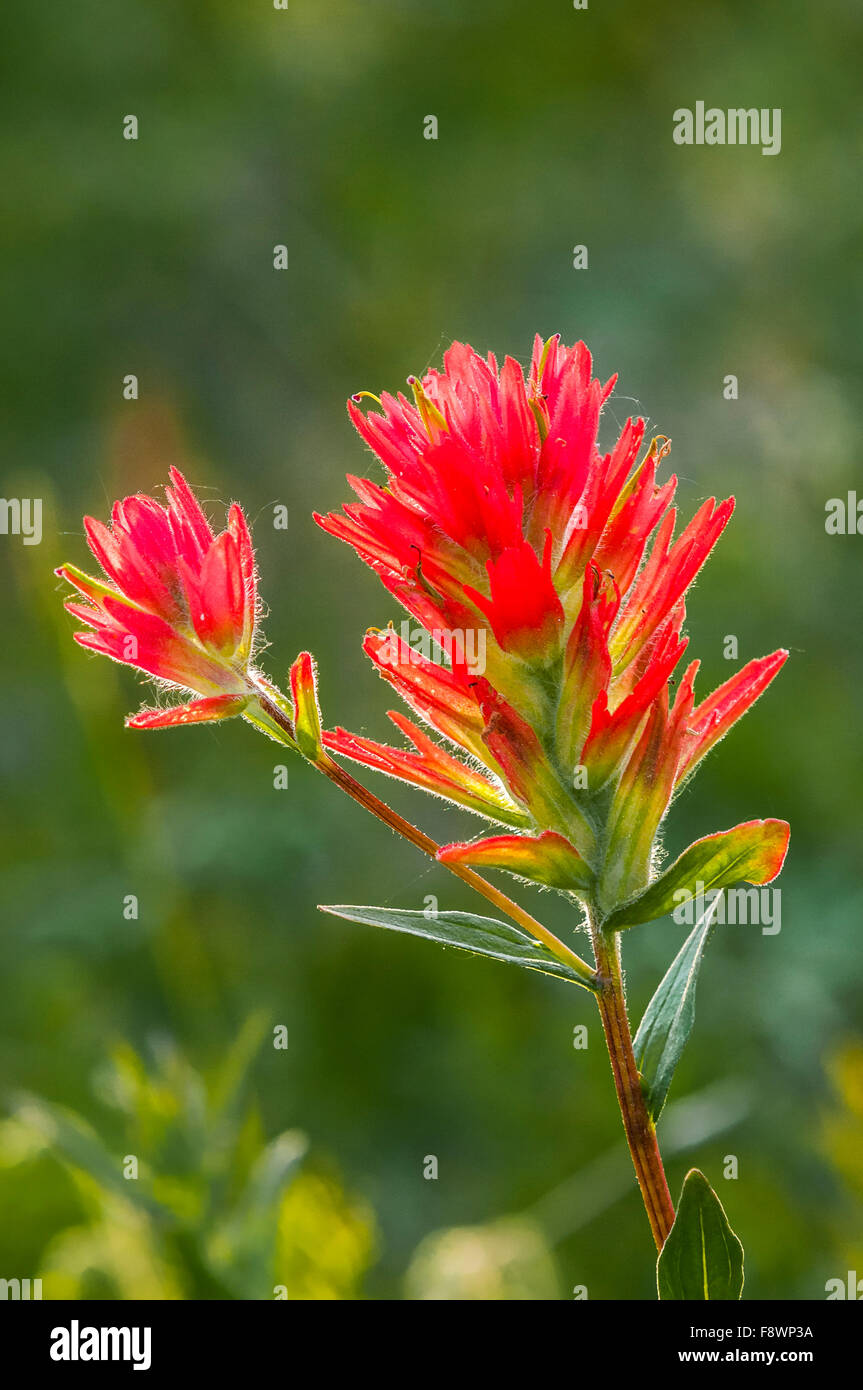

Ecology: Found on dry plains, rocky slopes, sagebrush scrub or pinyon/juniper woodland communities, Juniper, pine, and spruce-fir forests, from 5,000-11,000 ft (1524-3353 m) flowering April-October. Seeds many, small, 1.5-2 mm long, brown and with angled edges and a loose-fitting, netted coat, attached at the base.


Fruits: Asymmetric, ovoid, loculicidal capsules 10-15 mm long with 2-4 valves. Flowers: Large and showy with tufted, red, flower-like infloresences at stem tips, corollas with 2 fused upper lip lobes, beak-like with open tips, lower lips reduced, 3-toothed to -pouched, corollas 25-45 mm long, beaks yellow-green and sparsely puberulent above with red margins, lower lips dark green, 2-3 mm long, calyx unequally 4-lobed, 20-35 mm long with acute tips, divided to two-thirds of its length above, to one-third of its length below, the lobes curving upwards and with puberulent surfaces, stamens 4, anther sacs 2, unequal, stigmas slightly 2-lobed, infloresences with subtending, bright red to yellow, narrowly 3-lobed bracts 15-30 mm long, the bracts becoming shorter, wider, and more lobed than the leaves, the mature tips generally cream to red or green, infloresences spike-like, 5-20 cm long and open below. Leaves: Alternate, sessile, linear with 0-3 linear lobes, 20-80 mm long, the margins folded upward. Duration: Perennial Nativity: Native Lifeform: Subshrub General: Herbaceous perennials, to 1 m tall, stems few-branched, yellow to gray-green, becoming purple with age, glabrous to slightly puberulent.


 0 kommentar(er)
0 kommentar(er)
